Exploring the Benefits of Next-Generation Submarines
In the realm of modern naval warfare, next-generation submarines have emerged as a game changer, revolutionizing how nations approach underwater combat and strategic deterrence. These vessels are not just metal tubes that dive deep into the ocean; they are sophisticated technological marvels equipped with cutting-edge innovations that enhance their operational capabilities. With advancements in stealth, propulsion, and sensor technology, these submarines are designed to be more efficient, effective, and environmentally friendly. As we delve deeper into the myriad benefits of these underwater giants, it becomes clear that they are not merely tools of war but vital assets that can influence the balance of power on the global stage.
One of the most striking features of next-generation submarines is their enhanced stealth capabilities. Imagine a predator lurking silently in the depths of the ocean, undetectable by its prey. This is the essence of modern submarine warfare. Advanced materials and design techniques minimize noise and radar signatures, making these submarines incredibly difficult to spot. The strategic advantage this provides cannot be overstated; it allows submarines to gather intelligence, launch surprise attacks, or conduct reconnaissance missions without revealing their position. This stealth is not just about being hidden; it’s about being able to act decisively without being countered.
Moreover, advancements in propulsion systems have significantly improved the efficiency and speed of these vessels. Traditional submarines often relied on diesel-electric systems, which required them to surface frequently. However, next-generation submarines utilize air-independent propulsion (AIP) systems, allowing them to remain submerged for extended periods without surfacing. This capability enhances their endurance and tactical flexibility, enabling them to operate in hostile waters while reducing the risk of detection. The implications of this technology are profound; submarines can now conduct long-range missions, gather intelligence, and strike targets with precision, all while remaining cloaked from enemy sensors.
Fuel efficiency is another critical aspect of next-generation submarines. With rising operational costs, the ability to maximize fuel usage is essential for extending mission durations and enhancing overall performance. These submarines incorporate innovative technologies that allow them to operate longer on less fuel, which not only saves money but also reduces their environmental footprint. In an age where sustainability is paramount, these advancements represent a significant leap toward eco-friendly naval operations.
As we navigate through the technological landscape of these submarines, we cannot overlook the integration of automated systems and artificial intelligence (AI). These technologies are reshaping how submarines operate, enabling enhanced decision-making processes and reducing the need for large crews. Imagine a submarine that can analyze threats, optimize routes, and make real-time adjustments without human intervention. This level of automation not only increases efficiency but also enhances safety, allowing crews to focus on critical tasks while the submarine handles routine operations.
In conclusion, the benefits of next-generation submarines extend far beyond their immediate military applications. They represent a fusion of technology and strategy that is redefining naval warfare. As nations invest in these advanced vessels, they are not just preparing for the battles of today but are also positioning themselves for the conflicts of tomorrow. With enhanced stealth, improved propulsion, and the integration of AI, the future of underwater warfare is not just about who has the biggest fleet, but who can innovate and adapt to the ever-changing dynamics of global power.
- What makes next-generation submarines different from traditional ones?
Next-generation submarines feature advanced stealth technology, improved propulsion systems, and enhanced sensor capabilities that significantly increase their operational effectiveness and efficiency compared to traditional submarines. - How does air-independent propulsion work?
Air-independent propulsion allows submarines to operate without surfacing for extended periods by utilizing systems that do not require atmospheric oxygen, thus enhancing their stealth and endurance. - What are the environmental benefits of next-generation submarines?
These submarines incorporate fuel-efficient technologies and eco-friendly propulsion options that minimize their environmental impact, making naval operations more sustainable. - How does automation affect submarine operations?
Automation and AI integration enhance decision-making processes and reduce crew requirements, allowing submarines to operate more efficiently and safely in complex environments.

Enhanced Stealth Capabilities
In the realm of modern naval warfare, the ability to remain undetected is paramount, and next-generation submarines are at the forefront of this stealth revolution. These vessels are not just designed to be submerged; they are crafted with a keen focus on advanced stealth technology that significantly reduces their chances of detection by enemy forces. Imagine a predator lurking in the shadows, unseen yet ever-present—this is the essence of how these submarines operate.
One of the most critical innovations contributing to their stealth is the use of anechoic coatings. These specialized materials absorb sonar waves, making it challenging for enemy sonar systems to detect the submarine. Think of it as a soundproof room, where the echoes of your presence are muffled to the point of invisibility. When combined with advanced hull designs that minimize noise and turbulence, these submarines can glide through the water with a whisper.
Furthermore, the integration of advanced noise reduction technologies plays a pivotal role in enhancing stealth capabilities. Next-generation submarines utilize quieter propulsion systems, which significantly diminish the sounds produced while operating. This is akin to swapping out a loud, rumbling engine for a sleek, electric motor—one that allows for smooth, silent movement. The result? A vessel that can approach enemy territories without raising alarms.
Additionally, the strategic advantage of stealth cannot be overstated. By remaining undetected, submarines can gather intelligence, conduct surveillance, and launch surprise attacks with minimal risk. This ability to operate in secrecy transforms the dynamics of naval engagements. To illustrate this, consider the following table that outlines the key features contributing to the enhanced stealth capabilities of next-generation submarines:
| Feature | Description |
|---|---|
| Anechoic Coatings | Materials that absorb sonar waves, reducing detectability. |
| Noise Reduction Technologies | Advanced systems that minimize operational noise. |
| Hull Design | Streamlined shapes that reduce turbulence and drag. |
| Stealthy Propulsion | Quiet engines that allow for silent movement. |
In summary, the enhanced stealth capabilities of next-generation submarines are not merely technological upgrades; they represent a paradigm shift in how naval forces can operate. By blending cutting-edge materials with innovative engineering, these submarines can effectively evade detection, ensuring that they remain a crucial asset in modern military strategies. As we delve deeper into the advancements of these underwater marvels, it's clear that their stealth is not just a feature—it's a game-changer.
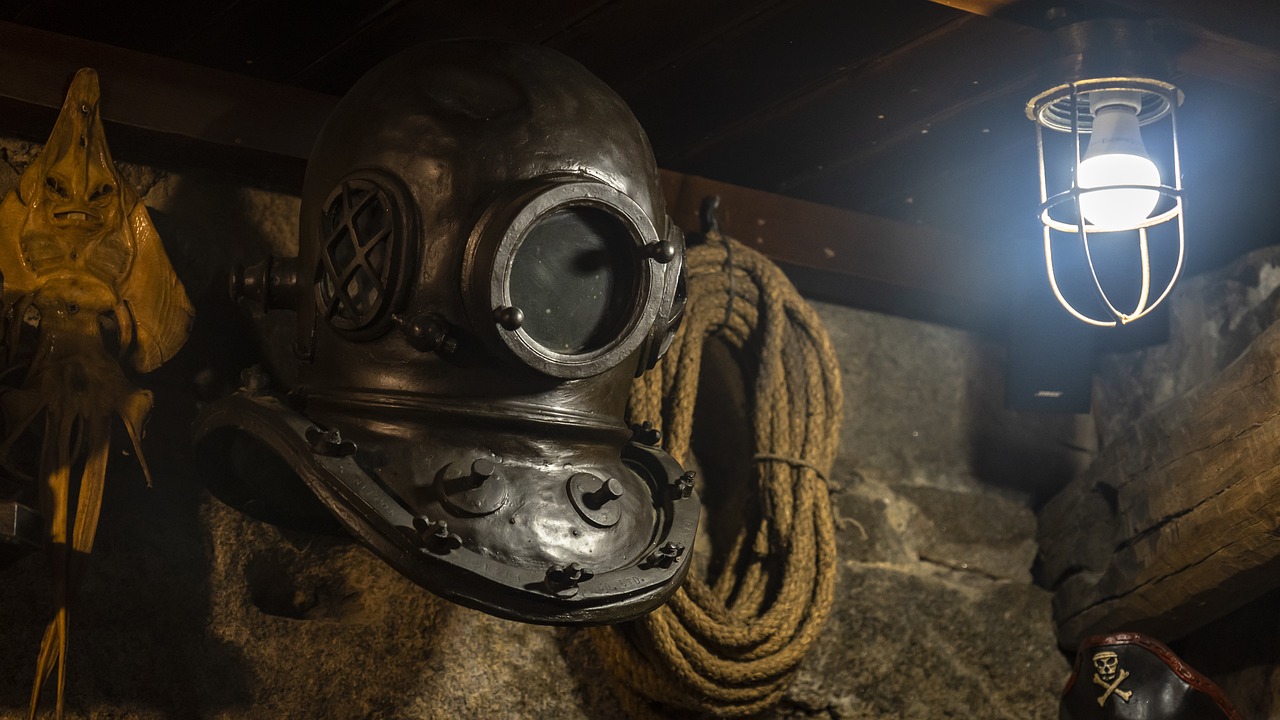
Advanced Propulsion Systems
When we talk about the evolution of next-generation submarines, one of the most exciting aspects is their . These systems have undergone a remarkable transformation, offering not just better speed but also improved efficiency. Imagine a submarine that can glide through the depths of the ocean with the grace of a dolphin, all while conserving energy and extending its operational range. This is the reality that modern naval technology is crafting.
At the heart of these advancements lies a variety of innovative propulsion technologies. Traditional diesel-electric systems are being enhanced or replaced by options that allow submarines to travel longer distances without the need to surface frequently. One prime example of this is the development of Air-Independent Propulsion (AIP) systems. AIP technology enables submarines to remain submerged for extended periods, significantly enhancing their tactical flexibility. This is akin to giving a chess player the ability to think several moves ahead, allowing for more strategic gameplay.
So, how does AIP work? In essence, it allows submarines to generate power without relying on atmospheric oxygen. There are several types of AIP systems, including:
- Stirling Engines: These engines use a heat source to drive a piston, which in turn generates power without needing to surface.
- Fuel Cells: These systems convert chemical energy directly into electrical energy, providing a silent and efficient power source.
- Closed-Cycle Diesel Engines: These engines operate in a closed loop, allowing for underwater propulsion without the need for fresh air.
By employing these technologies, submarines can stay hidden beneath the waves for weeks, if not months, making them formidable players in any naval scenario. This capability not only enhances their endurance but also gives them a significant edge in stealth operations.
Another critical aspect of advanced propulsion systems is their focus on fuel efficiency. With rising operational costs, especially in military budgets, submarines that consume less fuel can undertake longer missions without the financial burden of frequent refueling. The integration of cutting-edge materials and designs, such as lightweight composites and optimized hull shapes, has led to a dramatic reduction in fuel consumption. This means that submarines can operate more sustainably, allowing navies to extend their reach without compromising on performance.
Speaking of sustainability, the development of eco-friendly propulsion options is becoming increasingly important. Next-generation submarines are not just designed for military superiority; they also aim to minimize their environmental impact. Innovations such as hybrid propulsion systems, which combine conventional engines with electric systems, are paving the way for greener naval operations. By reducing emissions and noise pollution, these submarines are less likely to disturb marine life, fostering a more harmonious relationship with the ocean.
In conclusion, the advancements in propulsion systems are revolutionizing the capabilities of next-generation submarines. With enhanced endurance, fuel efficiency, and a commitment to environmental responsibility, these submarines are not just tools of warfare; they are a testament to human ingenuity and the quest for sustainable solutions in modern naval operations.
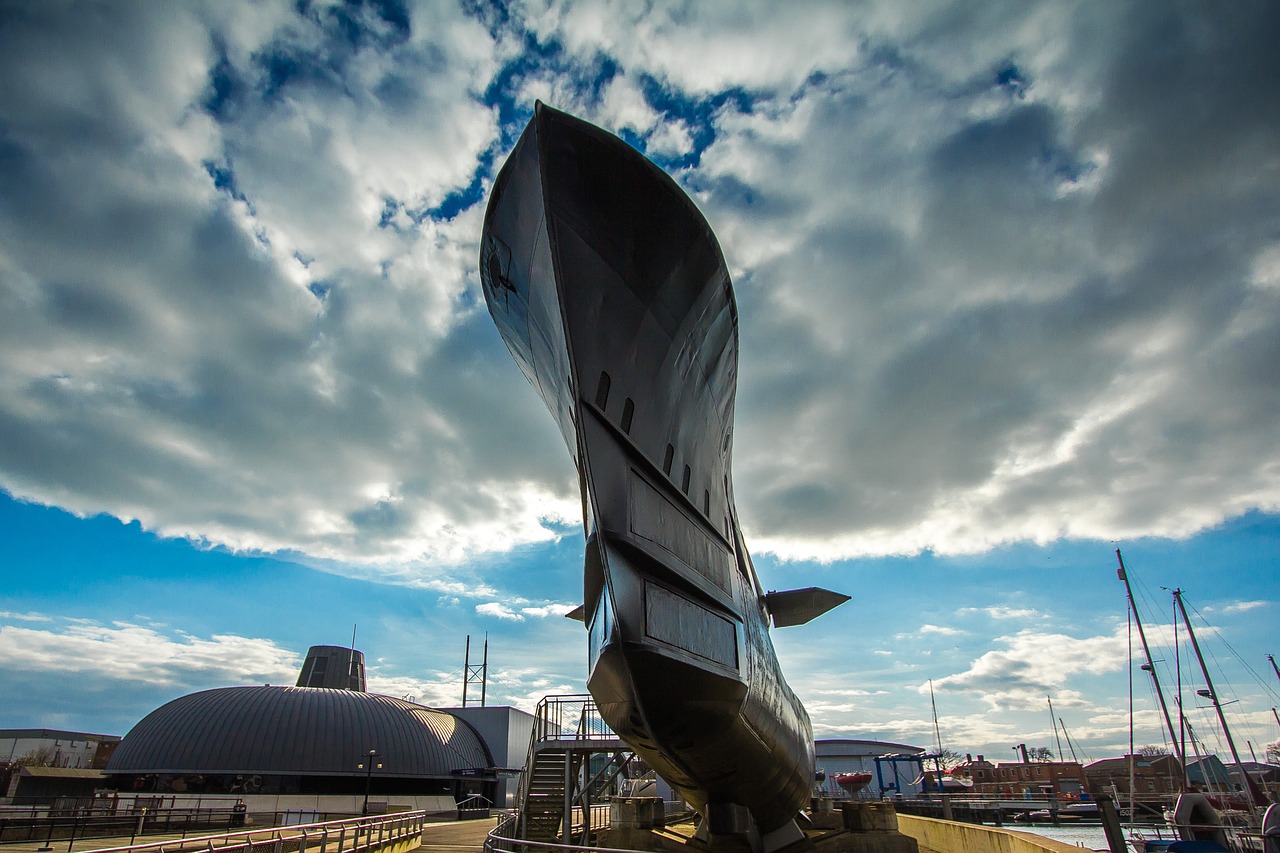
Air-Independent Propulsion
Air-independent propulsion (AIP) systems have revolutionized the way submarines operate underwater, allowing them to remain submerged for extended periods without the need to surface for air. Imagine being able to stay hidden beneath the waves for days, or even weeks, without breaking the surface—this is the magic of AIP. Traditional submarines rely on diesel engines that require oxygen to operate, limiting their submerged endurance. In contrast, AIP technology enables submarines to harness alternative energy sources, significantly enhancing their operational capabilities.
One of the key advantages of AIP systems is their ability to provide submarines with a stealthy edge in naval warfare. By reducing the need to surface or run on diesel engines, submarines can avoid detection by enemy forces, making them formidable players in strategic military operations. This stealth capability is crucial for intelligence gathering, surveillance, and reconnaissance missions, where being undetected can mean the difference between success and failure. The integration of AIP technology allows submarines to operate in contested waters, maintaining an element of surprise that is vital in modern warfare.
AIP systems typically utilize one of several technologies, including:
- Stirling engines
- Fuel cells
- Closed-cycle diesel engines
The implications of AIP technology extend beyond mere endurance. Submarines equipped with AIP can execute a wider range of missions, from stealthy patrols to complex multi-domain operations. This increased tactical flexibility allows naval forces to adapt to evolving threats and maintain a competitive edge in maritime security. Furthermore, as naval operations become more integrated with air and land forces, the ability of submarines to remain operationally relevant in joint missions becomes increasingly important.
In summary, air-independent propulsion represents a significant leap forward in submarine technology, enhancing both their stealth and endurance capabilities. As naval strategies evolve and the demands of modern warfare increase, AIP-equipped submarines will undoubtedly play a pivotal role in shaping the future of naval operations.
What is air-independent propulsion (AIP)?
AIP is a technology that allows submarines to operate underwater without the need to surface for air, significantly extending their submerged endurance.
How does AIP enhance a submarine's stealth capabilities?
By minimizing the need to surface or use noisy diesel engines, AIP-equipped submarines can remain undetected during missions, making them more effective in reconnaissance and strategic operations.
What types of AIP technologies are available?
Common AIP technologies include Stirling engines, fuel cells, and closed-cycle diesel engines, each providing unique advantages in terms of efficiency and operational capability.
Why is AIP important for modern naval warfare?
AIP allows submarines to execute longer missions with greater stealth, making them crucial for intelligence gathering and multi-domain operations in today's complex security environment.

Fuel Efficiency Improvements
In the realm of modern naval warfare, fuel efficiency has become a crucial factor that can significantly influence the operational capabilities of next-generation submarines. With rising fuel costs and the increasing need for extended missions, these submarines are engineered with state-of-the-art technologies aimed at maximizing fuel usage. The advancements in fuel efficiency not only enhance performance but also play a vital role in ensuring that submarines can remain submerged for longer periods without the need for frequent refueling.
One of the most notable improvements comes from the integration of advanced materials and designs that reduce drag. By employing streamlined hull shapes and lighter materials, submarines can glide through the water with less resistance, thereby conserving fuel. In addition, the adoption of cutting-edge propulsion systems, such as electric and hybrid technologies, allows submarines to operate more efficiently. These systems can switch between diesel engines and electric motors, optimizing fuel consumption based on operational needs.
Moreover, the implementation of energy recovery systems plays a significant role in enhancing fuel efficiency. These systems capture and reuse energy that would otherwise be lost during operations. For instance, regenerative braking systems can harness energy during deceleration, which can then be redirected to power other onboard systems or recharge batteries. This not only reduces fuel consumption but also minimizes the environmental footprint of submarine operations.
To illustrate the impact of these advancements, consider the following table that highlights the comparative fuel efficiency of traditional submarines versus next-generation models:
| Submarine Type | Operational Range (miles) | Fuel Consumption (gallons/hour) | Mission Duration (days) |
|---|---|---|---|
| Traditional Submarine | 2,500 | 150 | 30 |
| Next-Generation Submarine | 4,000 | 80 | 60 |
This table clearly demonstrates how next-generation submarines not only extend their operational range but also drastically reduce fuel consumption, allowing for longer missions with fewer logistical challenges. The ability to stay submerged for extended periods without surfacing for fuel translates into a strategic advantage, enabling submarines to conduct covert operations with minimal detection risk.
In conclusion, the focus on fuel efficiency improvements in next-generation submarines is not merely about saving costs; it's about enhancing tactical flexibility and ensuring that naval forces can respond swiftly to emerging threats. As these innovations continue to evolve, we can expect to see submarines that are not only more capable but also more environmentally responsible, paving the way for a new era of sustainable naval operations.
- What are the main benefits of improved fuel efficiency in submarines?
Improved fuel efficiency allows submarines to operate longer without refueling, reduces operational costs, and enhances their stealth capabilities during missions.
- How do advanced materials contribute to fuel efficiency?
Advanced materials help reduce the weight and drag of submarines, allowing them to move through water more easily and consume less fuel.
- What role do energy recovery systems play?
Energy recovery systems capture and reuse energy that would otherwise be lost, improving overall fuel efficiency and reducing environmental impact.

Environmental Considerations
In a world increasingly focused on sustainability, the design and operation of next-generation submarines are stepping up to the plate. Traditional naval vessels have often been criticized for their environmental impact, from fuel emissions to the potential for oceanic pollution. However, the latest advancements in submarine technology are paving the way for greener operations. These innovations not only enhance operational capabilities but also align with global efforts to protect our oceans.
One of the most significant strides in this area is the development of eco-friendly propulsion systems. By utilizing alternative fuels and energy sources, next-generation submarines can significantly reduce their carbon footprint. For instance, some submarines are now incorporating lithium-ion batteries and hybrid systems, allowing them to run on electricity for extended periods without the need for traditional diesel engines. This shift not only decreases emissions but also minimizes noise pollution, making submarines even stealthier.
Moreover, the integration of advanced waste management systems plays a crucial role in reducing environmental impact. These systems are designed to treat and manage waste onboard, ensuring that no harmful substances are discharged into the ocean. This commitment to cleanliness is vital, considering the delicate ecosystems submarines often operate within.
To illustrate the advancements in environmental considerations, let’s take a look at some of the key features of next-generation submarines:
| Feature | Description |
|---|---|
| Eco-Friendly Propulsion | Utilizes alternative fuels and hybrid systems to reduce emissions. |
| Waste Management Systems | Treats and manages waste onboard, preventing ocean pollution. |
| Noise Reduction Technologies | Minimizes sound emissions, protecting marine life and enhancing stealth. |
In addition to these technological advancements, the naval community is becoming increasingly aware of the importance of environmental stewardship. Training programs for submarine crews now include education on ecological responsibility, fostering a culture that values the protection of marine environments. By embracing this mindset, the next generation of naval personnel is not only equipped to operate advanced vessels but also to respect and protect the oceans they navigate.
Ultimately, the environmental considerations surrounding next-generation submarines are a testament to how military innovation can harmonize with ecological sustainability. As these vessels continue to evolve, they promise not only to enhance national security but also to safeguard our planet for future generations. It’s a win-win situation, where the advancement of technology and the preservation of our natural world can go hand in hand.
- What are next-generation submarines? Next-generation submarines are advanced naval vessels featuring cutting-edge technology that enhances their stealth, speed, and operational capabilities.
- How do next-generation submarines reduce their environmental impact? They utilize eco-friendly propulsion systems, advanced waste management technologies, and noise reduction methods to minimize emissions and pollution.
- What is air-independent propulsion (AIP)? AIP allows submarines to operate underwater for extended periods without surfacing, enhancing their endurance and tactical flexibility.
- Why are advanced sensor systems important? These systems improve reconnaissance capabilities, allowing submarines to gather intelligence and maintain situational awareness in complex environments.
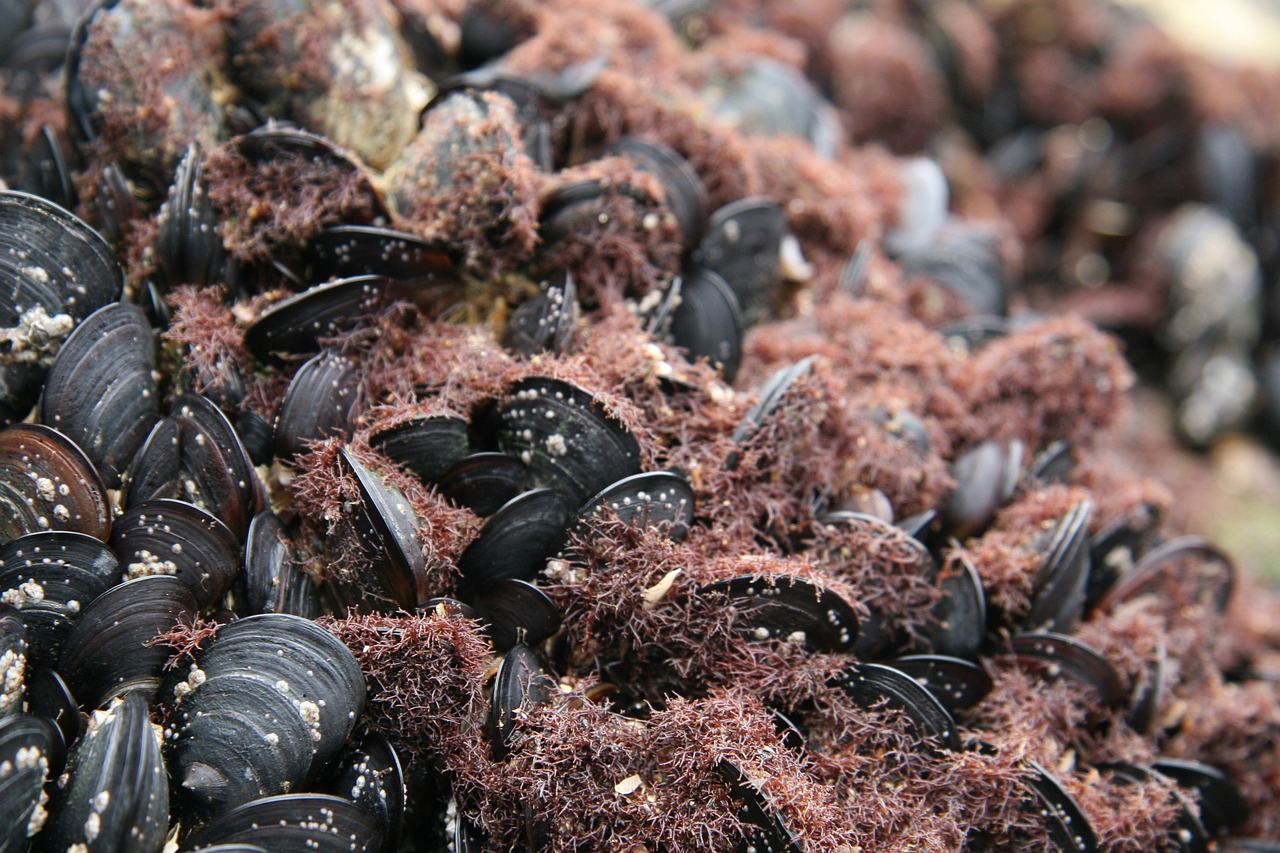
Automated Systems and AI Integration
In the rapidly evolving landscape of military technology, the integration of automated systems and artificial intelligence (AI) into next-generation submarines is nothing short of revolutionary. Imagine a submarine that can make split-second decisions based on real-time data, significantly reducing the cognitive load on its crew. This is not science fiction; it's the new reality for modern naval warfare. With automated systems handling routine tasks, submarines can operate more efficiently, allowing human operators to focus on strategic decision-making and complex problem-solving.
One of the most exciting aspects of this integration is the potential for enhanced situational awareness. By utilizing advanced algorithms and machine learning, submarines can analyze vast amounts of data from various sensors, including sonar and radar, to detect threats and opportunities with unprecedented accuracy. This capability not only increases the effectiveness of missions but also reduces the risk of human error, which can be critical in high-stakes situations.
Furthermore, the automation of certain functions means that submarines can be operated with fewer crew members, which leads to significant cost savings and increased operational flexibility. For instance, consider a submarine equipped with AI that can autonomously navigate through complex underwater terrains while avoiding obstacles. This allows the crew to concentrate on tactical maneuvers and strategic planning rather than getting bogged down in the minutiae of navigation.
However, the integration of AI and automation does raise important questions about reliability and security. As these systems become more integral to submarine operations, ensuring they are resilient against cyber threats becomes paramount. A compromised automated system could lead to catastrophic failures or unintended engagements. Thus, robust cybersecurity measures must accompany these technological advancements to safeguard national security.
To illustrate the impact of automated systems and AI integration on submarine operations, consider the following table that highlights key benefits:
| Benefit | Description |
|---|---|
| Increased Efficiency | Automated systems streamline operations, allowing for quicker decision-making. |
| Reduced Crew Requirements | AI can take over routine tasks, enabling smaller crews to operate effectively. |
| Enhanced Situational Awareness | Real-time data analysis improves threat detection and response. |
| Cost Savings | Fewer crew members and improved efficiency lead to lower operational costs. |
| Cybersecurity Challenges | Increased reliance on automation necessitates robust security protocols. |
In conclusion, the integration of automated systems and AI into next-generation submarines is transforming naval warfare in profound ways. As these technologies continue to develop, we can expect submarines to become even more capable, efficient, and resilient in the face of modern threats. The future of underwater combat is not just about stealth and firepower; it’s about leveraging technology to outsmart adversaries and ensure mission success.
- How does AI improve submarine operations?
AI enhances decision-making by analyzing real-time data, allowing submarines to respond more effectively to threats. - What are the benefits of automated systems in submarines?
Automated systems increase operational efficiency, reduce crew requirements, and enhance situational awareness. - Are there security risks associated with AI in submarines?
Yes, the reliance on automated systems raises concerns about cybersecurity, requiring robust protective measures. - Can submarines operate with fewer crew members?
Absolutely, AI and automation allow for more efficient operations, enabling submarines to function effectively with smaller crews.

Enhanced Sensor and Surveillance Technology
In the realm of modern naval warfare, the significance of advanced sensor and surveillance technology in next-generation submarines cannot be overstated. These submarines are equipped with state-of-the-art sensor systems that dramatically improve their reconnaissance capabilities. Imagine a submarine gliding silently through the depths of the ocean, its sensors acting like a hawk's keen eyesight, constantly scanning the environment for potential threats and opportunities. This enhanced situational awareness is crucial for successful military operations and strategic decision-making.
One of the standout features of these advanced submarines is their modern sonar systems, which provide superior detection and tracking abilities. Traditional sonar technology has evolved into sophisticated systems that employ advanced algorithms and signal processing techniques. This evolution allows submarines to detect submarines, ships, and even underwater obstacles from much greater distances than before. The ability to identify targets accurately and at longer ranges gives commanders a significant tactical advantage, enabling them to make informed decisions and engage or evade as necessary.
Moreover, the integration of data fusion and analysis capabilities takes this technology to the next level. By merging data from various sensors—such as sonar, radar, and electronic surveillance—submarines can create a comprehensive picture of the battlespace. This process, often referred to as sensor fusion, allows for enhanced operational effectiveness. For example, if a submarine detects a potential threat using its sonar, it can simultaneously analyze data from its radar systems to confirm the nature of the threat, whether it be a surface ship or another submarine. This level of situational awareness is vital in complex environments where decisions must be made in fractions of a second.
To illustrate the impact of these technologies, consider the following table that summarizes key advancements in sensor technology:
| Technology | Advancement | Impact on Operations |
|---|---|---|
| Sonar Systems | Enhanced detection range and accuracy | Improved target identification and engagement |
| Data Fusion | Integration of multiple sensor data | Comprehensive situational awareness |
| Electronic Surveillance | Real-time threat monitoring | Proactive defense measures |
In addition to these advancements, the role of automated systems and artificial intelligence (AI) cannot be overlooked. AI algorithms can analyze vast amounts of data in real-time, identifying patterns and anomalies that human operators might miss. This capability not only enhances decision-making but also reduces the cognitive load on the crew, allowing them to focus on critical tasks. Picture a highly trained crew member being augmented by AI, like having a highly skilled assistant who can process information at lightning speed—this synergy is what makes next-generation submarines so formidable.
In conclusion, the enhanced sensor and surveillance technology in next-generation submarines is a game-changer in naval warfare. With improved sonar systems, data fusion capabilities, and the integration of AI, these submarines can operate with unprecedented levels of efficiency and effectiveness. As military strategies evolve, the importance of these technologies will only continue to grow, ensuring that submarines remain a vital component of modern naval operations.
- What are the main advantages of enhanced sensor technology in submarines?
Enhanced sensor technology allows for greater detection ranges, improved target identification, and comprehensive situational awareness, which are crucial for successful military operations.
- How does data fusion improve submarine operations?
Data fusion integrates information from various sensors, providing a complete picture of the environment, which enhances decision-making and operational effectiveness.
- What role does AI play in next-generation submarines?
AI assists in analyzing vast amounts of data quickly, identifying patterns, and reducing the cognitive load on crew members, thereby improving overall operational efficiency.
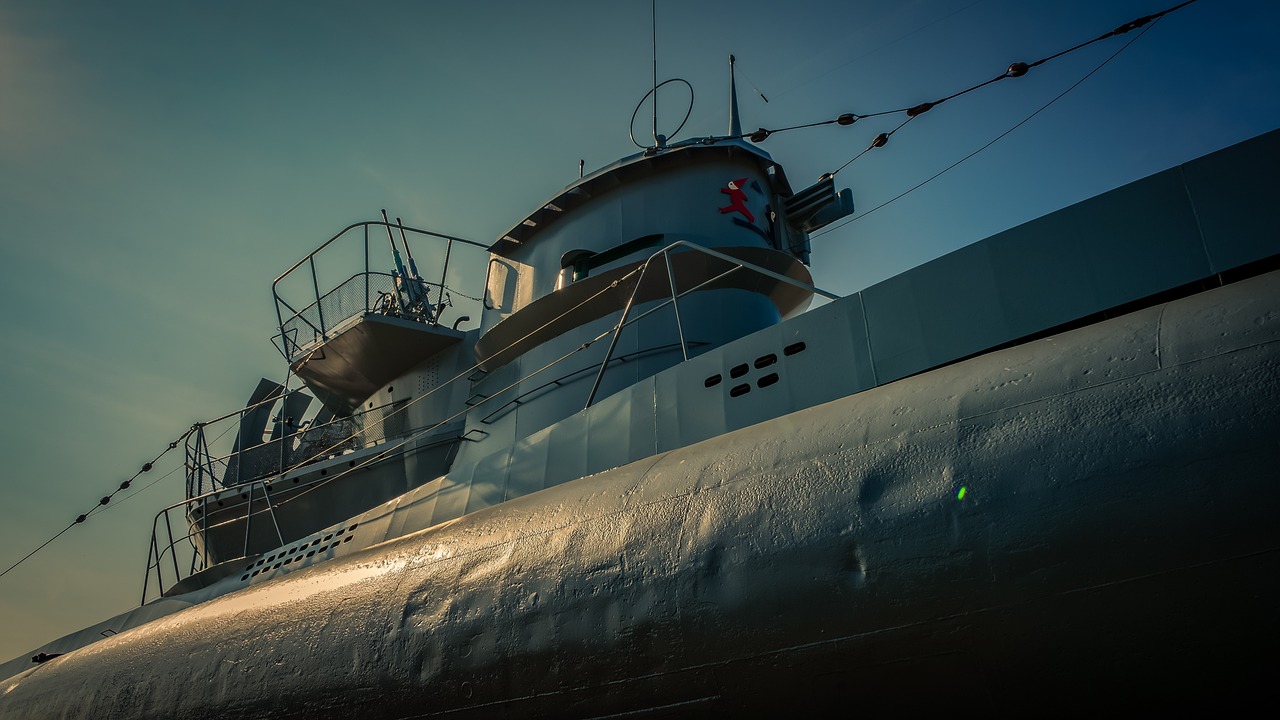
Sonar Advancements
In the realm of underwater warfare, sonar technology has undergone revolutionary changes that significantly enhance the operational capabilities of next-generation submarines. Imagine being able to hear a whisper from miles away while submerged in the depths of the ocean. That’s the power of modern sonar systems! These advanced systems not only allow submarines to detect enemy vessels but also to track them with pinpoint accuracy, making stealth operations more effective than ever.
One of the key advancements in sonar technology is the development of multifrequency sonar systems. These systems utilize multiple frequencies to create a more detailed picture of the underwater environment. By sending out sound waves at different frequencies, submarines can gather a wealth of information, including the size, shape, and even the material composition of objects in the water. This capability is crucial for identifying potential threats and navigating through complex underwater terrains.
Moreover, the integration of digital signal processing (DSP) has transformed how sonar systems interpret data. With DSP, submarines can filter out background noise and focus on relevant sounds, enhancing their ability to detect enemy submarines or underwater mines. This technology is akin to having a highly trained ear that can distinguish a pin drop in a crowded room. The result? Increased situational awareness and improved decision-making capabilities during missions.
Another fascinating innovation is the use of passive sonar systems. Unlike traditional active sonar, which emits sound waves and listens for echoes, passive sonar systems only listen for sounds made by other vessels. This stealthy approach allows submarines to operate undetected while still gathering critical intelligence. Imagine a ninja silently observing from the shadows; that’s how passive sonar works in the underwater realm.
To illustrate the impact of these advancements, let’s take a look at a comparison of traditional sonar systems versus modern multifrequency sonar systems in terms of detection range and accuracy:
| Feature | Traditional Sonar | Modern Multifrequency Sonar |
|---|---|---|
| Detection Range | Up to 10 miles | Up to 20 miles |
| Accuracy | Moderate | High |
| Noise Filtering | Poor | Excellent |
These advancements not only enhance the capabilities of submarines but also play a crucial role in the broader context of naval warfare. With superior sonar technology, submarines can engage in more effective reconnaissance missions, providing vital intelligence to military command. The ability to detect and track enemy vessels from a distance allows for better strategic planning and execution of military operations.
As we look to the future, the integration of artificial intelligence (AI) with sonar systems is set to revolutionize underwater warfare even further. AI can analyze vast amounts of sonar data in real-time, identifying patterns and potential threats with unprecedented speed and accuracy. This means that submarines will not only be equipped with advanced detection capabilities but also with intelligent systems that can make informed decisions on the battlefield.
In conclusion, the advancements in sonar technology are transforming the capabilities of next-generation submarines, making them more effective and formidable in the underwater domain. As these technologies continue to evolve, we can expect submarines to play an increasingly vital role in modern naval warfare, ensuring that they remain a critical asset for national defense strategies.
- What is sonar technology? Sonar technology uses sound waves to detect and locate objects underwater.
- How do modern submarines use sonar? Modern submarines utilize advanced sonar systems to enhance their detection capabilities and gather intelligence.
- What are the benefits of passive sonar systems? Passive sonar systems allow submarines to listen for sounds without emitting noise, making them harder to detect.
- How does AI improve sonar technology? AI enhances sonar technology by analyzing data quickly and accurately, identifying threats in real-time.

Data Fusion and Analysis
In the rapidly evolving landscape of naval warfare, have emerged as pivotal components that enhance the operational effectiveness of next-generation submarines. These vessels are no longer just silent hunters lurking beneath the waves; they are now equipped with sophisticated systems that integrate and analyze data from multiple sources. Imagine a conductor leading an orchestra, where each instrument contributes to a harmonious symphony. Similarly, data fusion enables submarines to create a comprehensive picture of their operational environment, allowing for informed decision-making in real-time.
At the core of this advancement is the ability to combine information from various sensors, including sonar, radar, and electronic warfare systems. By synthesizing this data, submarines can achieve a level of situational awareness that was previously unattainable. For instance, when a submarine detects an enemy vessel, it can simultaneously assess the surrounding underwater terrain, weather conditions, and potential threats from the air, all thanks to advanced data analysis algorithms. This multi-faceted understanding is crucial for executing complex missions, where every second counts.
The integration of artificial intelligence (AI) into data fusion processes further amplifies these capabilities. AI algorithms can process vast amounts of information at lightning speed, identifying patterns and anomalies that human operators might overlook. This not only enhances the submarine's ability to respond to threats but also reduces the cognitive load on the crew. In essence, AI acts as a co-pilot, assisting in the decision-making process and allowing crew members to focus on strategic objectives rather than being bogged down by data overload.
Moreover, the implications of effective data fusion extend beyond immediate tactical advantages. The insights gained from data analysis can inform long-term strategic planning. For example, by analyzing historical data on enemy movements and environmental conditions, naval commanders can devise more effective operational strategies and allocate resources more efficiently. This proactive approach is akin to a chess player anticipating their opponent's moves, allowing for better preparation and response.
In summary, data fusion and analysis are transforming the operational landscape of next-generation submarines. By integrating diverse data sources and leveraging AI, these vessels are becoming smarter, more agile, and increasingly capable of executing complex missions in a dynamic environment. As we move forward, the role of data in naval warfare will only continue to grow, underscoring the importance of these technological advancements in maintaining a strategic edge on the high seas.

Strategic Role in Modern Warfare
Next-generation submarines are not just marvels of engineering; they represent a revolutionary shift in the strategic landscape of modern warfare. As military conflicts evolve, the role of these underwater giants has become increasingly vital. Their advanced capabilities allow nations to maintain a strategic edge, ensuring that they can respond to threats swiftly and effectively. But what exactly makes these submarines so crucial? Let's dive in!
First and foremost, submarines serve as a deterrent against potential adversaries. With their stealthy designs and advanced weaponry, they can operate undetected in enemy waters, ready to strike at a moment's notice. This ability to remain hidden while gathering intelligence or preparing for an offensive action creates a psychological edge, dissuading adversaries from aggressive actions. The mere presence of a next-generation submarine can alter the calculations of enemy forces, making them think twice before engaging in hostile maneuvers.
Moreover, these submarines are integral to multi-domain operations. In today’s interconnected battlefield, the ability to operate across land, sea, air, and cyber domains is essential. Next-generation submarines can launch precision strikes against land targets, support air operations, and even conduct cyber warfare, all while remaining submerged. This versatility allows for coordinated efforts with other military branches, enhancing the overall effectiveness of joint operations. For instance, submarines can provide crucial intelligence to ground forces, ensuring that all units are on the same page and can execute their missions seamlessly.
In addition to their offensive capabilities, submarines also play a critical role in defensive strategies. They are equipped to monitor vast areas of ocean and can detect incoming threats long before they reach their targets. This surveillance capability is vital for national security, as it allows for proactive measures to be taken against potential attacks. By integrating advanced sensor and surveillance technologies, next-generation submarines can gather real-time data, enhancing situational awareness for commanders on the surface.
To illustrate the strategic advantages of next-generation submarines, consider the following table that highlights their key roles:
| Role | Description |
|---|---|
| Deterrence | Maintains a psychological edge by being undetectable and ready to strike. |
| Multi-Domain Operations | Coordinates actions across land, sea, air, and cyber domains. |
| Intelligence Gathering | Monitors enemy movements and provides real-time data to command centers. |
| Support for Joint Operations | Enhances collaboration with other military branches for comprehensive strategies. |
In conclusion, the strategic role of next-generation submarines in modern warfare cannot be overstated. They are not just tools of destruction; they are essential components of national defense, capable of adapting to the ever-changing landscape of military operations. As we look to the future, it is clear that these submarines will continue to shape the way nations engage in warfare, providing a blend of stealth, power, and versatility that is unmatched in the naval domain.
- What makes next-generation submarines different from older models?
Next-generation submarines feature advanced stealth technology, improved propulsion systems, and enhanced sensor capabilities, making them more effective in various military operations. - How do submarines contribute to national security?
Submarines serve as a deterrent against potential threats, gather intelligence, and support joint military operations, thereby enhancing overall national security. - What role does automation play in modern submarines?
Automation and AI integration in submarines enhance decision-making capabilities and reduce the need for large crews, allowing for more efficient operations.
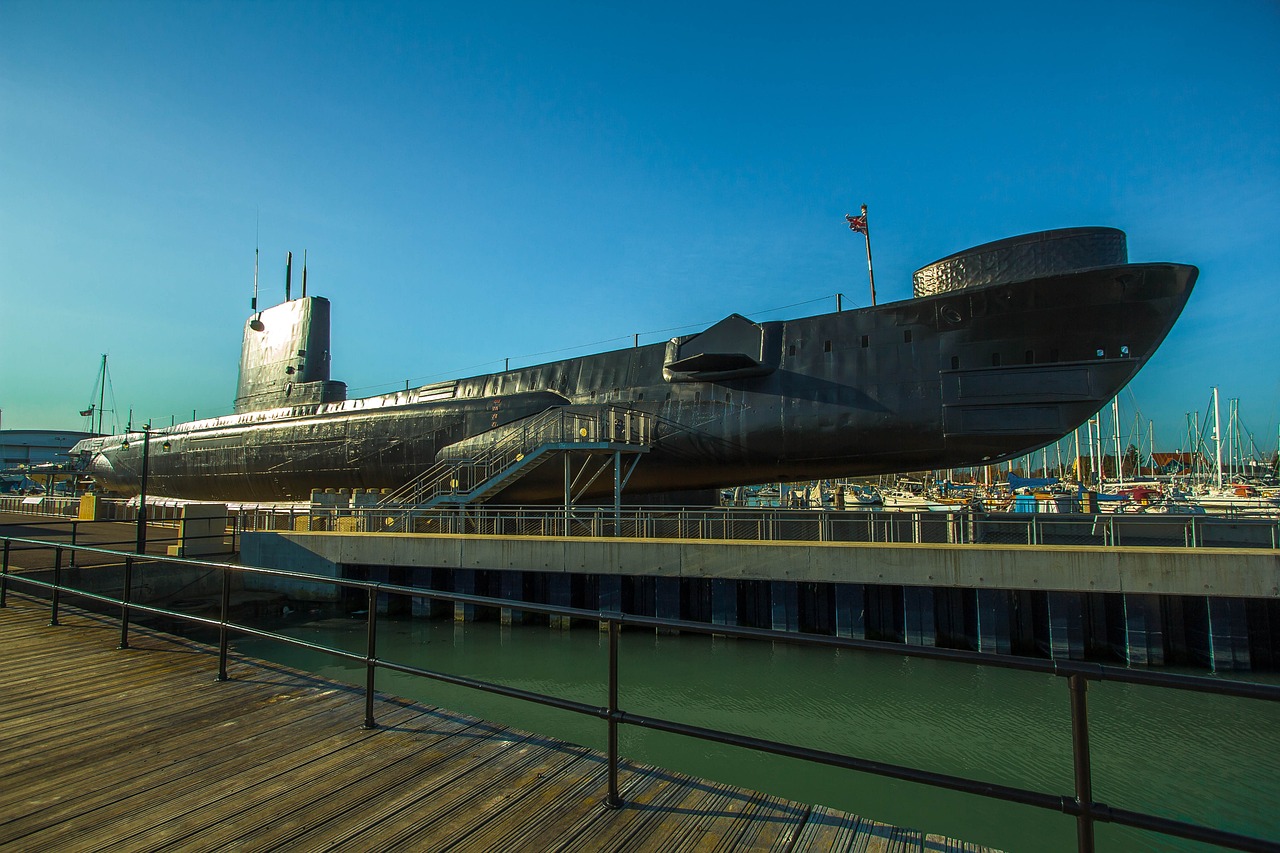
Deterrence and Defense Strategies
Submarines have long been regarded as the silent guardians of national security, and next-generation submarines are taking this role to a whole new level. These advanced vessels serve as a vital deterrent against potential threats, operating in the shadows and projecting power without revealing their positions. Imagine a predator lurking beneath the waves, ready to strike at a moment's notice—this is the essence of the strategic advantage that modern submarines provide.
One of the key aspects of deterrence is the ability to instill fear and uncertainty in potential adversaries. The mere existence of a fleet of next-generation submarines can alter the calculus of military strategy for rival nations. When an enemy knows that these advanced submarines could be lurking just out of sight, it complicates their decision-making process. They must weigh the risks of aggressive actions against the potential for an unseen retaliatory strike. This creates a powerful psychological barrier that enhances national security.
Next-generation submarines are equipped with advanced stealth capabilities, making them nearly invisible to enemy detection systems. Their ability to operate undetected allows them to gather intelligence and monitor adversarial movements without revealing their own position. This intelligence-gathering capability is crucial for developing effective defense strategies. By maintaining a constant watch over potential threats, submarines can provide real-time data that informs military operations across all domains.
Furthermore, these submarines are not just about stealth; they are also armed with cutting-edge weaponry that significantly enhances their deterrent capabilities. With advanced missile systems and torpedoes, they can engage targets from long distances, ensuring that any hostile actions are met with a swift and decisive response. This capability is particularly important in the context of multi-domain operations, where threats can emerge from land, sea, air, and cyber domains.
To illustrate the impact of next-generation submarines on defense strategies, consider the following table that outlines their key features and benefits:
| Feature | Benefit |
|---|---|
| Stealth Technology | Increased survivability and operational security |
| Advanced Weaponry | Enhanced deterrence and offensive capabilities |
| Intelligence Gathering | Real-time situational awareness for strategic decision-making |
| Multi-Domain Operations | Seamless integration with other military branches |
In conclusion, next-generation submarines are not just vessels; they are strategic assets that play a critical role in modern deterrence and defense strategies. Their ability to operate undetected, gather intelligence, and project power ensures that they remain an essential component of any nation's military arsenal. As global threats evolve, so too will the strategies employed by these underwater titans, making them indispensable in safeguarding national interests.
- What makes next-generation submarines different from older models? Next-generation submarines feature advanced stealth technology, improved propulsion systems, and enhanced weaponry, making them more efficient and effective in modern warfare.
- How do submarines contribute to national security? Submarines serve as a deterrent against potential threats, gather critical intelligence, and can execute precision strikes, thereby enhancing overall national security.
- What role does automation play in submarine operations? Automation and AI integration in submarines streamline operations, reduce crew requirements, and enhance decision-making capabilities.
- Are next-generation submarines environmentally friendly? Many next-generation submarines incorporate eco-friendly propulsion systems that minimize their environmental impact while maintaining operational efficiency.

Multi-Domain Operations
The landscape of modern warfare is evolving rapidly, and next-generation submarines are at the forefront of this transformation, particularly in the realm of . These operations are not confined to a single battlefield; instead, they span air, land, sea, cyber, and space, requiring a seamless integration of capabilities across various domains. Imagine a chess game where each piece can move in multiple directions, creating a complex strategy that can outmaneuver the opponent. This is precisely how next-generation submarines enhance military effectiveness.
Next-generation submarines are designed to operate in synergy with other military assets, whether they be air forces, land troops, or naval fleets. This capability allows for a coordinated approach that maximizes the strengths of each domain. For instance, submarines can gather intelligence and conduct reconnaissance missions that feed real-time data to air and land forces, facilitating informed decision-making and rapid response to emerging threats.
Furthermore, the versatility of these submarines means they can adapt to different operational needs. They can engage in covert operations, provide strategic deterrence, or support humanitarian missions, all while maintaining a low profile. This adaptability is crucial in today's unpredictable global environment, where threats can emerge from various directions and require a fluid response. Next-generation submarines can operate in joint task forces, collaborating with other military branches to achieve common objectives. Their stealth capabilities allow them to conduct operations without drawing attention, making them invaluable assets in sensitive missions.
To illustrate the effectiveness of multi-domain operations involving submarines, consider the following key aspects:
- Intelligence Gathering: Submarines can collect vital intelligence that informs air and land operations, enhancing situational awareness.
- Force Projection: Their ability to strike from underwater allows for surprise attacks, disrupting enemy plans and operations.
- Coordinated Engagement: Submarines can launch missiles or deploy unmanned systems that work in tandem with other military assets.
In conclusion, the integration of next-generation submarines into multi-domain operations not only amplifies their strategic value but also redefines how military forces collaborate in the face of modern threats. As technology continues to advance, the role of submarines in multi-domain operations will likely expand, making them even more critical to national defense strategies.
- What are multi-domain operations? Multi-domain operations refer to military strategies that utilize capabilities across various domains such as land, sea, air, cyber, and space to achieve strategic objectives.
- How do submarines contribute to multi-domain operations? Submarines gather intelligence, conduct reconnaissance, and can engage in coordinated attacks with other military branches, enhancing overall operational effectiveness.
- Why are next-generation submarines important? They incorporate advanced technologies that improve stealth, propulsion, and sensor capabilities, making them essential assets in modern naval warfare.
Frequently Asked Questions
- What are the key benefits of next-generation submarines?
Next-generation submarines offer a host of benefits, including enhanced stealth capabilities that make them harder to detect, advanced propulsion systems for greater efficiency and speed, and automated systems that leverage AI for improved decision-making. These advancements not only boost operational range and mission capabilities but also contribute to environmental sustainability.
- How do air-independent propulsion systems work?
Air-independent propulsion (AIP) systems allow submarines to operate without surfacing for extended periods. This technology significantly enhances a submarine's endurance and tactical flexibility, enabling them to conduct various underwater missions without the need for frequent recharging or refueling.
- What advancements have been made in submarine sonar technology?
Modern submarines are equipped with cutting-edge sonar systems that provide superior detection and tracking capabilities. These advancements allow submarines to gather intelligence more effectively and enhance their situational awareness, making them formidable assets in underwater warfare.
- Why is fuel efficiency important for submarines?
Fuel efficiency is crucial for submarines as it reduces operational costs and extends mission durations. With improved fuel technologies, next-generation submarines can undertake longer missions without the need for frequent refueling, thereby increasing their strategic value in naval operations.
- How do next-generation submarines contribute to national security?
Next-generation submarines play a vital role in national security by serving as a deterrent against potential threats. Their advanced capabilities allow them to engage in multi-domain operations, collaborating with other military branches to enhance overall defense strategies.
- What environmental considerations are taken into account in submarine design?
Modern submarine designs focus on minimizing environmental impact through the development of eco-friendly propulsion options. These innovations aim to reduce emissions and ensure that naval operations are more sustainable, aligning military goals with environmental responsibility.



















